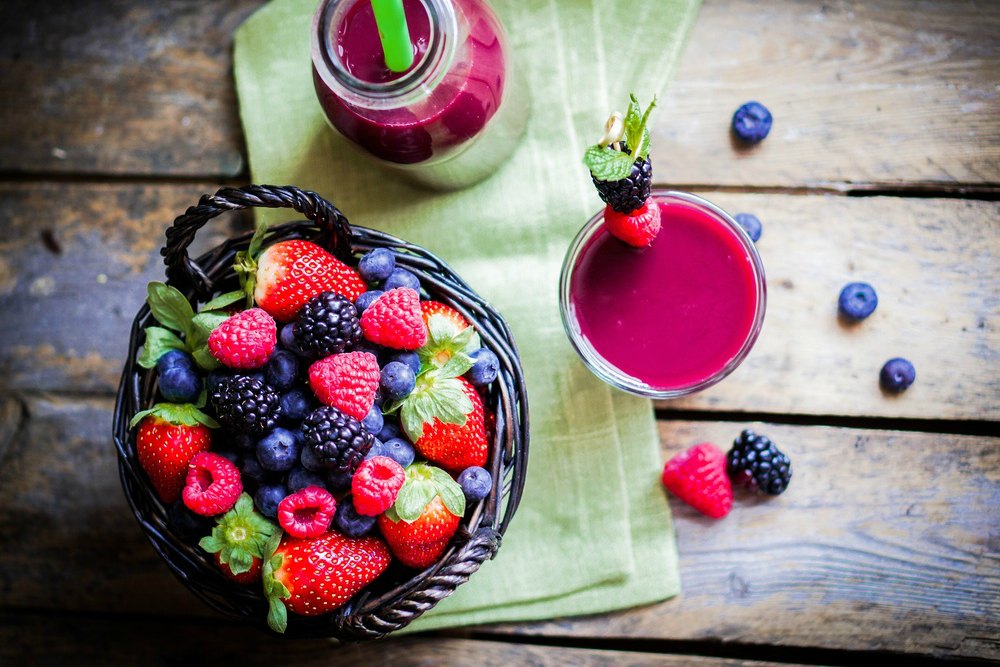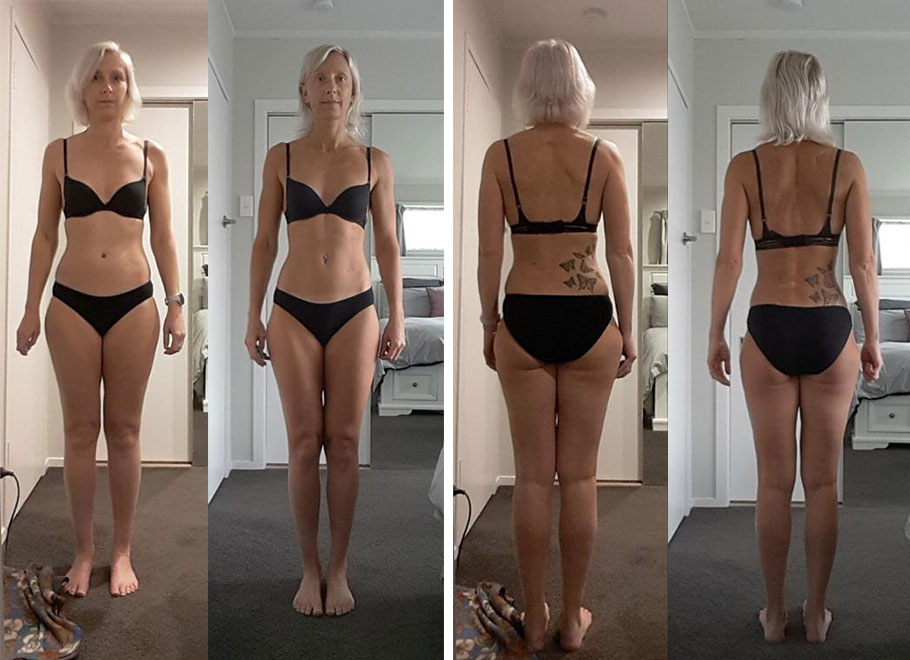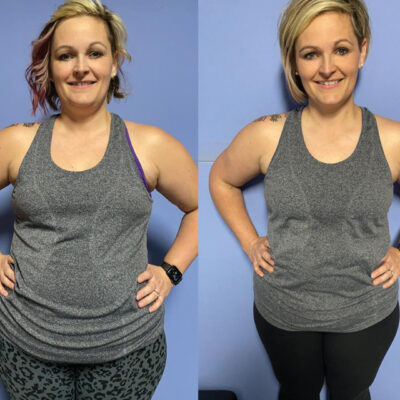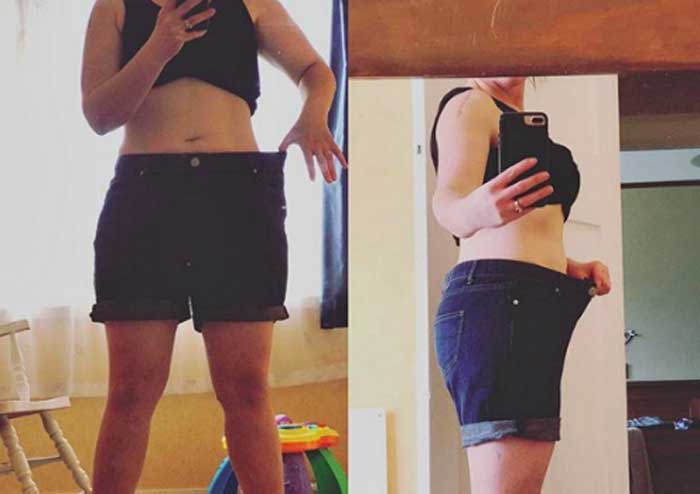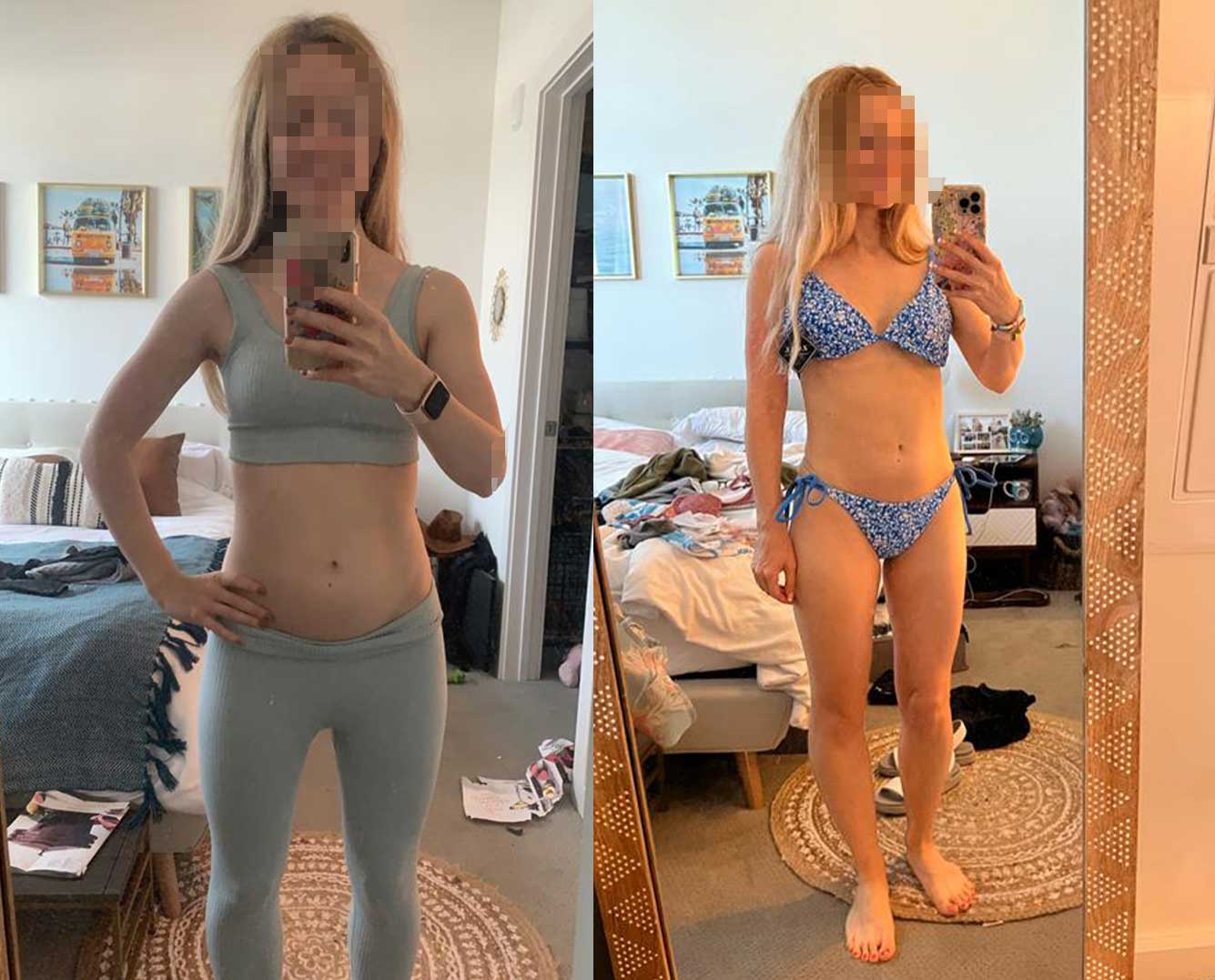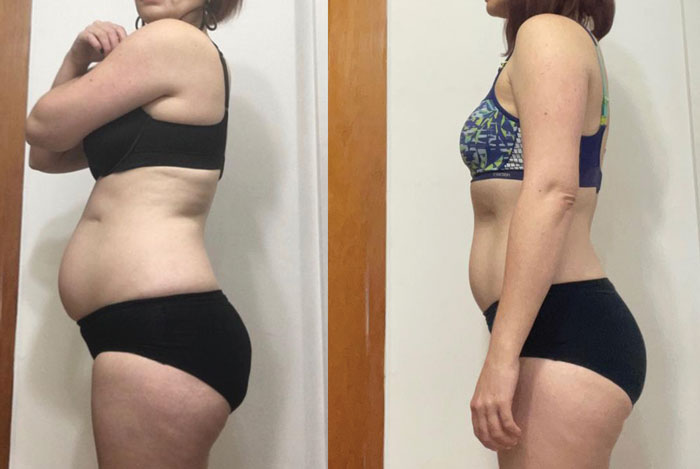I’ve had incredible changes in my health from implementing an anti-inflammatory diet and that’s why I want to share what I’ve learned with you. I truly believe an anti-inflammatory style of eating is the key to feeling good, having less pain and aging well. It’s also going to help you lose weight.
Statistics show that women suffer from more inflammatory conditions than men. So many women have accepted that their body feels less than great. They’ve given up – and fair enough – because it can be really frustrating and seemingly impossible to figure things out.
If you are one of these women, you may view these conditions as a “normal” part of aging, your bad luck or your genes. While there may be a bit of truth in this, I want you to know your quality of life can be so much better.
Your body can feel so much better.
I used to think period pain (the kind that leaves you crying in bed for 24 hours) was just my “normal” but then I fixed it with an anti-inflammatory diet.
My experience inspired me to dig deeper into inflammation and how it impacts our lives. Inflammation is tied to almost every problem associated with aging, including:
- Joint pain
- Arthritis
- Crohn’s disease
- IBS
- Period pain
- Fibromyalgia
- Asthma
- Diabetes
- Certain cancers
- Heart disease.
So if we can get on top of inflammation, we’ll age, look and feel better but we’ll also be preventing a whole lot of problems we view as normal or out of our control.
There are many factors that cause inflammation and, because of that, many ways to address it. But one of the best ways is starting with what you eat.
In this article, I’ve set out the three main changes I’ve made to my diet. As always, there is personal experience and research behind my recommendations but I’ve simplified everything so you can take away only what you need to know. To make it even easier for you, in the final section, I’ve included a practical list of things you can do to get started with an anti-inflammatory diet.
How To Eat An Anti-Inflammatory Diet
1. Eat a diet low in arachidonic acid
Arachidonic acid is an omega-6 fatty acid that is important for things like brain health and muscle growth. While we need some arachidonic acid in our diet, too much of it can be problematic, especially if you suffer from inflammatory conditions.
Arachidonic acid mainly comes from animal products, so if you want to reduce your intake of arachidonic acid you need to watch your intake of:
- Meat
- Eggs
- Dairy products, including butter, yoghurt and cheese.
Studies have shown that diets low in arachidonic acid help reduce arthritis symptoms and other types of pain, including period pain. In fact, painkillers work by stopping the formation of prostaglandins, inflammatory chemicals made from arachidonic acid which cause pain in the body. So it makes sense that if we eat less arachidonic acid we’ll make less of these inflammatory chemicals that cause pain.
2. Eat less fat.
An imbalanced intake of fatty acids can also trigger inflammation and, unfortunately, in our modern diets we consume much more omega-6 than omega-3 fatty acids. (Vegetable oils are mostly omega-6 fatty acids, while fish and fish oil are sources of omega-3s).
When you have way more omega-6s than omega-3s in your diet, it creates inflammation.
You might ask – can’t I just eat more omega-3s or take fish oil? Well, actually it’s hard, if not impossible, to bring omega-3s up high enough to balance this ratio out. You can take fish oil but you’d need to take a lot of it to counterbalance the omega-6s. A better way to improve the ratio between omega-6s and omega-3s is to reduce your overall intake of omega-6s.
You can increase omega-3s with fish and fish oil, but you also need to reduce omega-6s.
The only way to do this is to cut back your overall fat intake, including coconut oil and butter even though they are trendy in health and fitness at the moment. Remember, arachidonic acid is an omega-6 fatty acid, so limiting your consumption of meat, egg yolks and dairy products will also help.
3. Consume more colorful fruits and vegetables.
This is the best part of an anti-inflammatory diet. Rather than thinking about what you have to cut out, think about what you can add in. With an anti-inflammatory diet, it’s all about colour.
Fruits, vegetables and herbs get their colour from powerful plant compounds called bioflavonoids. These bioflavonoids have anti-inflammatory actions in the body. Bioflavonoids also have anti-aging, anti-oxidant and anti-bacterial effects, and they reduce the risk of heart disease, osteoporosis, cancer and many other illnesses.
One of the ways bioflavonoids reduce inflammation is by inhibiting the negative effects of arachidonic acid, which we talked about earlier.
You can maximize your intake of bioflavonoids by eating a variety of colourful fruits and veggies everyday. I like to call this “eating from the rainbow”.
How many colors of the rainbow do you eat everyday? Is there a color missing in your diet?
According to Dr Barry Sears, one of the world’s leading inflammation experts, you need to eat about 1 kg (2lbs) of colourful fruits and vegetables daily to get a “therapeutic dose” of these plant compounds. This amounts to 10 x 100g servings. As I’ve been researching and writing this article, I’ve been tracking my intake and most days I get about 750g of fruits and vegetables (on 2400 calories/day). I top myself up with high quality green tea, organic coffee, cacao powder, lots of spices, curcumin and fish oil supplements. Most women, especially those who eat less than 2000 calories per day will need to work hard to eat more than 500g of fruits and vegetables each day. That’s why if you are dieting, it’s even more important to focus on food quality.
Getting Started With An Anti-Inflammatory Diet
So how do you put this into action? If it all seems a bit too much, try picking one or two things from the list below and working on them. Don’t expect to see changes overnight. If you have period problems, you’ll see changes within a few cycles. You’ve got to stick with it for a while and be confident that you are doing the right thing for your body.
Here are some practical ways you can start eating an anti-inflammatory diet:
- Reduce your overall intake of animal products, including eggs and dairy.
- Have a few vegetarian nights each week. As a bonus, legumes are much cheaper than meat so you will save money and they count towards your bioflavonoid intake.
- Try having a whole week each month where you don’t eat animal products at all (I like to time this before and during my period and it makes a huge difference as to whether I get cramps or not).
- Eat fish a few times a week instead of meat.
- Eat less fat overall to balance out your omega-6 to omega-3 ratio.
- Stop eating junk food, deep fried food, and baked goods.
- Eat foods high in bioflavonoids (eat from the rainbow everyday). To get enough of these in your diet aim for 8-10 servings of fruits and vegetables everyday.
- Use more herbs, spices and superfood powders.
- Drink your coffee black or choose green tea instead of coffee with milk.
An anti-inflammatory lifestyle also means getting enough sleep, practicing stress management and maintaining a healthy weight. Anti-inflammatory supplements, such as curcumin and fish oil, can be helpful too. But remember, while taking supplements will help, you need to address the root problem and when it comes to inflammation, it starts with what you eat.

